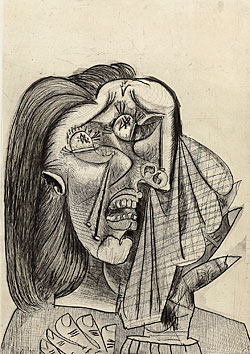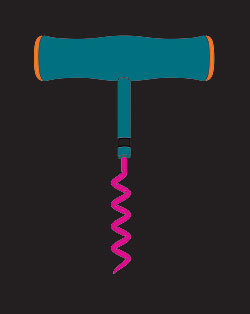Multiple values

Simply sign up to the Life & Arts myFT Digest -- delivered directly to your inbox.
In February 2010, “L’Homme qui marche I” (“Walking Man I”), a life-size sculpture by Giacometti, became the most expensive work ever sold at auction. After just eight minutes of bidding at Sotheby’s in London, it was sold for over £65m – almost four times its asking price. That record has since been broken: first by Picasso’s painting “Nude, Green Leaves and Bust”, which went for $106.5m (£66m) that April; then by Munch’s “The Scream”, sold for $119.9m (£74m) in 2012. But the fact that the “Walking Man I” fetched such a sum remains significant, for it is not a unique piece of art – rather it is one of an edition of six, with four additional “artist proofs”.
After the sale, Melanie Clore, Chairman of Sotheby’s Europe, commented that “Walking Man I” achieved such a price because it is “an extremely rare masterpiece”. But isn’t unique better than rare?
Not necessarily. As Georgina Adam, FT Art Market columnist and editor-at-large of The Art Newspaper, explains: “Up until about a generation ago, what people prized in an artwork was the fact that it was unique. That’s really been turned on its head by the arrival of financiers in the market and the culture of buying art as an investment. People feel reassured if something very similar to what they are buying is in a museum collection – and also that there is a clear price comparison.” A work by a famous artist in a low edition is therefore regarded by some as a safer investment than a solo work.
Most of Giacometti’s five other walking men are in museums or major private collections, where they are likely to stay. So while the one up for auction had a measurable value – there are directly comparable objects against which it can be assessed – it is still rare enough that demand hugely outstrips supply.

There are other reasons why editioned artworks – or “multiples” – are considered valuable. Picasso’s “La femme qui pleure”, an etching from 1937, sold for $5.1m at Christie’s in New York in 2011, setting a new record for a single print at auction. It is in an edition of 15, most of which are in museums, and were distributed only to Picasso’s friends during his lifetime. As Jonathan Rendell of Christie’s explains, the work is important in its own right – unique or not. “Picasso regarded it as the print version of ‘Guernica’. He doesn’t usually let his emotion out as he does here – it’s really all about his feelings about the Spanish civil war. And, crucially, it doesn’t exist in any other form. Printmaking was central to Picasso’s working technique.”
Other artists have shown a more cynical attitude towards printmaking, treating it as merely another source of revenue. “People nowadays are more interested in buying a print by a famous artist than buying it because it’s a print,” the London gallerist Alan Cristea tells me. “There are lots of Francis Bacon prints about, but they weren’t done by Francis Bacon. They were signed by him but done by professional printers, and they were done because his galleries wanted to make more money – as did he. But he had no interest in printmaking. They are simply prints which are copies of his paintings. They still fetch large sums at public auction because people don’t know the difference.”

Though a print may not be unique, it is an original – not to be confused with a reproduction. When Cristea went into the business of selling prints more than 40 years ago, it was with the desire to “paper the world in original art”. He adds, “I see it as a more democratic form. A print is something that can be disseminated rather than just going to one Russian tycoon.”
The original purpose of printmaking was, in fact, to disseminate imagery. There were no permanent public art collections in England until 1817 – when the Dulwich Picture Gallery was established – so, before that, prints were how most people saw the Old Masters. Britain’s first public exhibition to include prints was held by the Society of Artists in 1760, and its popularity proved there was a hunger for such work. Moreover, prints were reasonably affordable, costing around a guinea.
Indeed, despite the eye-watering prices achieved by the very best, rarest-editioned work by Picasso or Giacometti, multiples are still generally more affordable than unique artworks, making them appealing to new collectors.
Christie’s first impression prints and multiples auction in New York next month is aimed at such buyers: a midseason sale containing lower-priced objects, carefully timed to coincide with its off-season contemporary art sale.

There have been print auctions at Christie’s since 1781, and a section for editions at Art Basel – widely considered the most important art fair – since it was founded in 1970. Today, with the proliferation of biennales and art fairs, artists are under greater pressure to produce work – and multiples meet that demand. The art fair Multiplied filled a gap in the market when it launched in London in 2010. It runs at the same time as the Frieze Art Fair in October – but, at Frieze, editioned multiples are confined to just one booth, in partnership with select galleries.
The internet is also changing the way people buy art, particularly less expensive pieces like artist multiples. The entrepreneurial Young British Artists were always quick to spot a selling opportunity: Tracey Emin and Sarah Lucas set up “The Shop” in 1993 in east London – and nowadays you can buy Damien Hirst prints directly from his website for as little as £950, or visit Emin International, the London shop and website. Auction houses, too, are adapting. “As we move into the online world, we will see more online sales at greater frequency to meet demand,” says Rendell. “People do like to have things straightaway nowadays.”
As with a one-off piece of art, quality, condition and provenance are important criteria when buying a multiple. “The point is to try and get as close as possible to the artist,” Adam advises. So a print made during an artist’s lifetime is usually worth much more than a posthumous edition.

The same goes for photography. For vintage pictures, price is determined by the age of the photograph, date of printing, whether it was printed by the photographer, whether it’s signed, its condition and its provenance. Ben Burdett, founder of the London photography gallery Atlas, is currently showing pictures by the celebrated photojournalist Robert Capa. Capa’s poignant picture of “Mothers of Naples” (1943) – whose sons were killed four days before the city’s liberation – is on sale for £11,000, while several pictures from his more famous Omaha Beach series cost just £1,500 each. The former, from Life magazine, was printed at the time it was taken; the latter were printed in 2006. The difference is all-important.
And yet, compared with the rest of the art market, photographs are still relatively cheap – and that’s partly because they are seldom unique. While artist multiples at the top of the market attract major collectors amassing important works and buyers seeking a safe investment, the lower end can be a good place for new collectors to begin. As Rendell puts it, “With multiples, you can get a major name without the major price tag attached.”
——————————————-
‘First Impression Prints and Multiples’, Christie’s New York, July 16, www.christies.com
Comments